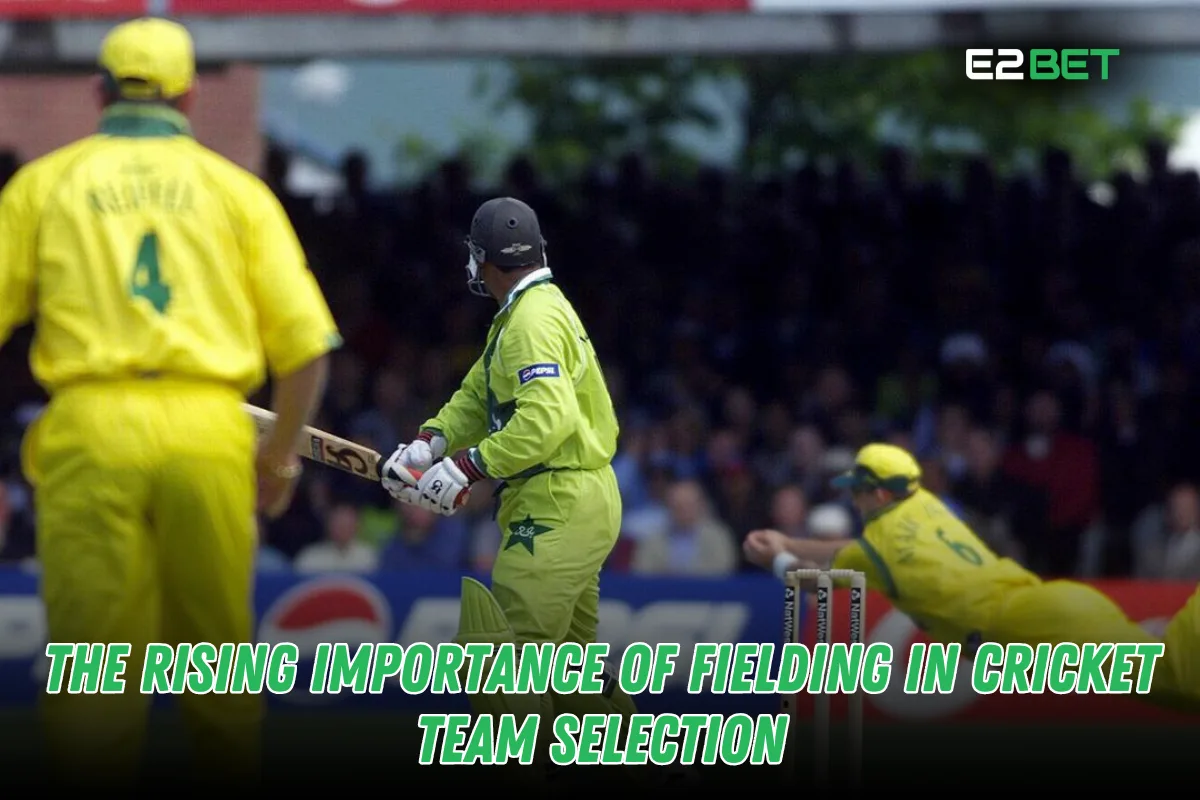Cricket is no longer just about batting and bowling; the importance of fielding in cricket has grown significantly. With modern matches being highly competitive, fielding has become a game-changer. Teams now prioritize fielding skills in team selection, as a single run-out, a diving stop, or a spectacular catch can determine the outcome.
Over the years, cricket fielding techniques have evolved, thanks to fitness training and strategic placements. In limited-overs formats like T20 cricket, the emphasis on saving runs and taking quick catches is higher than ever. But how did fielding become such a crucial aspect of the game?
1. Evolution of Fielding in Cricket
Fielding in the Early Days
In the early days, fielding was not given much importance. Most players focused on batting and bowling, with basic catching and ground fielding being the norm. Dropped catches and misfields were common, as teams did not have structured cricket fielding drills to improve their skills.
Modern-Day Fielding Revolution
With the rise of limited-overs cricket, especially T20 leagues like the IPL, the game demanded sharp reflexes, athletic fielding, and quick decision-making. Fielders like Jonty Rhodes, Ricky Ponting, and AB de Villiers changed the perception of fielding by making stunning saves and breathtaking catches.
Coaches now focus on cricket fielding training, incorporating speed drills, reaction time exercises, and strength workouts to develop complete cricketers.

2. The Impact of Fielding on Team Performance
Run-Saving Abilities
A good fielder can save 20-30 runs per innings, which can be the difference between winning and losing. Players stationed in the inner circle in limited-overs cricket have to prevent quick singles and execute run-outs, while outfielders need to cut off boundaries with athletic dives.
Catching and Game-Changing Moments
Catching in cricket has always been crucial, but in modern matches, a dropped catch can cost a team the game. Slip fielders in Test cricket play a key role in grabbing edges, while boundary fielders in T20 cricket need to time their jumps perfectly to take spectacular catches.
3. Role of Fielding in Team Selection
Selectors Prioritizing Fielding Skills
Cricket boards and selectors now conduct fielding drills in selection camps to evaluate players. Fitness benchmarks such as agility tests, speed runs, and reaction time challenges help identify top fielders.
Fielding as a Decisive Factor in Close Matches
There have been several instances where one game-changing run-out or a diving stop has turned the tide of a match. For example, MS Dhoni’s lightning-fast stumpings and Ben Stokes’ jaw-dropping catches have won games for their teams.
4. Key Fielding Positions and Their Significance
Slip Cordons in Test Cricket
The slip cordon is crucial in Test matches, as bowlers rely on slip fielders to catch edges from fast bowlers and spinners. Players like Rahul Dravid and Mark Waugh mastered this art.
Inner Circle Fielders in Limited-Overs Cricket
In ODIs and T20s, inner-circle fielders must anticipate quick singles, effect direct hits, and stop boundaries. Agile players like Ravindra Jadeja and Glenn Maxwell excel in this role.
Outfielders in T20 Cricket
Outfielders need exceptional throwing accuracy, diving ability, and sprinting speed to stop crucial runs. Players like Trent Boult and Faf du Plessis have saved several boundaries in T20 cricket.
5. Legendary Fielders Who Transformed the Game
Jonty Rhodes – The Pioneer
Jonty Rhodes set the benchmark for modern fielding standards. His famous run-out of Inzamam-ul-Haq in the 1992 World Cup remains one of the best fielding moments in cricket history.
Ricky Ponting – Aggression and Sharp Reflexes
Ponting combined sharp reflexes, accurate throws, and incredible anticipation to dominate the field. His impact as both a fielder and captain elevated Australia’s cricketing dominance.
AB de Villiers – The Superman of Cricket
AB de Villiers, known as “Mr. 360°” for his batting and was a superb fielder as well. His one-handed diving catches and bullet throws made him one of the greatest fielders of all time.
6. Fielding in the IPL and T20 Leagues
High-Intensity Fielding in T20 Cricket
With T20 matches often decided in the last few overs, teams prioritize fielding to gain a competitive edge. Saving 10-15 extra runs in a T20 game can make all the difference.
Impact of Young Fielders in IPL
The IPL has produced exceptional young fielders like Riyan Parag, Shubman Gill, and Devdutt Padikkal, who bring energy and athleticism to their teams.
7. Training and Fitness for Modern Fielders
Strength and Agility Training
Top fielders focus on speed training, flexibility exercises, and reaction drills to improve their performance.
Reaction Time and Reflex Enhancement
Modern training includes catching machines, AI-driven analytics, and simulation exercises to enhance fielding skills.
8. The Future of Fielding in Cricket
AI and Technology in Fielding Training
With smart training tools and AI-based performance analysis, teams can track and improve fielding efficiency like never before.
Will Fielding Become the Most Important Skill?
With increasing emphasis on complete cricketers, fielding could soon become a non-negotiable skill in team selection.
Conclusion
The role of fielding in cricket has evolved tremendously. Today, it is a key factor in team selection, and teams rely on sharp reflexes, quick decision-making, and strong athleticism to gain an advantage. As technology advances, we can expect fielding skills to become even more important in shaping match results.
FAQs
Q1. Why is fielding so important in modern cricket?
Ans: Fielding saves runs, creates wicket-taking opportunities, and often determines match outcomes.
Q2. Which cricketers are considered the best fielders of all time?
Ans: Jonty Rhodes, Ricky Ponting, and AB de Villiers are among the greatest fielders in history.
Q3. How does fielding influence team selection in major tournaments?
Ans: Teams prioritize fit and agile fielders to enhance fielding efficiency and reduce runs conceded.
Q4. What are the key fitness requirements for a top-class fielder?
Ans: Speed, agility, reflexes, and core strength are essential for diving stops and quick throws.
Q5. How is technology improving fielding skills in cricket?
Ans: AI-driven analytics, catching machines, and real-time performance tracking help players improve their fielding.